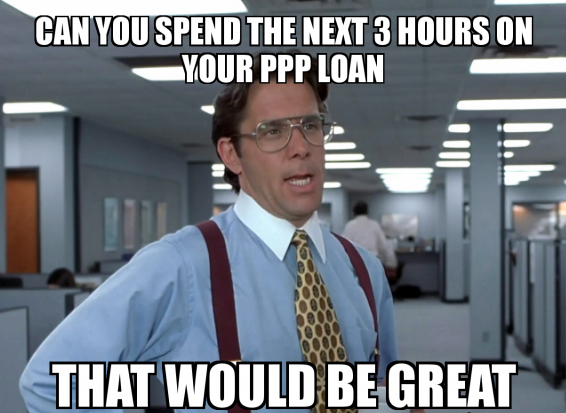As tech companies descended on Capitol Hill this week, the ongoing debate around antitrust continues. Startups have long lamented about the anticompetitive business practices adopted by the big 4: Apple, Amazon, Facebook and Google. If you build a business that relies on the Apple or Google app stores then you automatically know you’re going to pay a ~30% toll to access consumers. The debate has further been heightened as some startups like Classpass have been hit with this toll as they roll out virtual classes due to COVID. The founders argue that they are forgoing their normal take rate from providers (gym’s, etc) they work with during COVID so why is Apple charging them 30%. Apple is in an interesting situation, because if they make exceptions for one business, they need to make for others. They also would face potential legal battles from previous customers that did have to pay.

A recent report claims $TWTR is considering a subscription model to augment a significant decline in advertising revenue. This would be among the first of the big social media companies to consider this approach and I believe could lead to a reckoning in the industry. $FB is currently facing a backlash among advertisers who claim the social media company isn’t doing enough to control controversial rhetoric on its platform and will inevitably see a decline in advertising revenue. A few years ago, the idea of paying to access online “news” content wasn’t a thing. Publishers were primarily in the business of selling ads in offline media and as they built their online presence they carried this business model over. As consumers got irritated with intrusive ads, it became clear they had to change their offering. Newspapers such as the NYTimes piloted new paywall programs to test consumers’ appetite for subscription based products. The result was mostly favorable, and as a result, many publishers today have pivoted their business models to favor subscription over advertising revenue especially as it becomes increasingly difficult to get ad dollars from brands in a world in which the big tech companies ($GOOG, $FB, etc) dwarf smaller publishers in traffic.
It’s been interesting to watch Q2 play out in VC land – especially given the disconnect between Wall Street and Main Street throughout the Covid pandemic. While initially a cataclysmic drop-off in funding was expected, the industry overall was not as affected as originally thought. Similar to the public markets, many investors continued to see a buying opportunity and had re-allocated their portfolios to support their likely winners. A key takeaway – early stage funding continues to face some challenges while late stage appears to have fared better. Many early stage B2C companies, however, are struggling.

I’ve been reading a lot of commentary recently on tech companies that took PPP loans during Covid. Was this right? What’s definitely not right is our government bailing out bloated corporations during the pandemic. If you believe in capitalism then we should let the free markets take their path and prune the weak. One would argue that this infusion of cash saved jobs. Not sure how true that ultimately will become in October when the stipulations attached to the loans disappear. I bet we’ll see more layoffs, lots of them. US airlines have already made announcements for layoffs as soon as they are legally able. So basically taxpayers have funded a short term experiment on borrowed time that was setup for failure from the beginning. Harvard economists agree, the program has had little impact on employment at small businesses to date.

I’ve always had a strong viewpoint that digitally native vertical brands are a dime a dozen and those who will have successful exits are the ones who are vertically integrated, own manufacturing, strong defensible positions and/or are durable/consumable businesses built on recurring revenue and more enticing LTV metrics. With the recent news on Lululemon acquiring Mirror for $500 million it proves there is still an appetite for strategic buyers to pay premiums for DTC startups. In this case, I estimate LULU paid 5x-6X revenue which is a phenomenal outcome for the founders and investors. LULU was already a minority investor in the company which gave them intel into the business that other competitors likely didn’t get. Why corporate VC gets a bad rap sometimes, a good strategic investor can bring a lot of value.

If you look at the majority of venture backed DTC brands in the market today, they all could benefit from diversifying their revenue streams. As this cohort scales and eventually becomes omnichannel (since that’s the playbook most are following), gross margins will inevitably suffer. When startups expand into new product categories it’s still often challenging to get >50-60% landed margins if you’re selling physical products. This is where services come in.
I’ve been thinking a lot recently about why much of the venture capital ecosystem hasn’t invested in innovation that could really help stem some of the challenges we are facing during this pandemic; areas around synthetic biology, contract tracing, vaccine development and even our antiquated unemployment systems. The fact that millions of Americans haven’t been able to access unemployment benefits due to systems that are 20-30 years old is mind boggling, especially when 75% of venture capital dollars goes to software that ultimately could alleviate these challenges. The main culprit: Privatization of US innovation.

A VC once told me that 50% of some of their portfolio companies’ growth is coming through partnerships. I wasn’t surprised, but I found this quite interesting, because successful structure and execution seems to be the achilles heel of many organizations.
Through the marketing lens, there’s no shortage of content and advice on how to grow your startup. The thing is, most startups look at marketing as a cost center (which it usually is) but there is white space here that is more efficient than marketing and that is through partnerships. Now, I know “partnerships” is a broad term, but let’s try and narrow it down by focusing purely on revenue generating initiatives. In previous roles at Casper and Newell Brands, I oversaw numerous innovative partnerships and here are some lessons I learned as well as some thoughts on why this space continues to be undervalued.


Back in October of 2019, I wrote a piece on how all the value creation was essentially being captured in the private markets and retail investors were being left out. It wasn’t always this way (think Amazon or Neflix’s IPO). Over the last 3-5 years, startups have been staying private longer as late stage capital keeps funneling in. Blame traditional firms like TRowe and Fidelity, and Softbanks massive Vision fund among others, for providing the cash. Venture has always been an alternative asset class and fund managers are seeking growth in areas outside of traditional channels.
